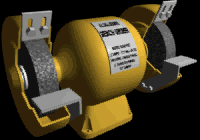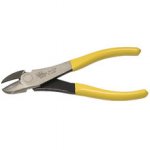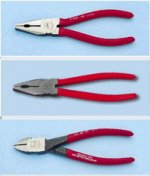First, the characteristics of zinc alloy
1. Proportion.
2. Casting performance, and can die of complex shape, thin-walled precision parts, casting surface smooth.
3. Can be surface treatment: electroplating, spraying, painting.
4. Melting and casting without absorption of iron, non-corrosive pressure-type, non-stick mode.
5. Has good mechanical properties and wear resistance at room temperature.
6. Low melting point, melting at 385 ℃, easy casting.
The process of using the issue to be noted:
1. Resist poor. When the alloy composition of impurity elements such as lead, cadmium, tin exceeds the standard, leading to deformation aging cast, the performance for the volume swell, mechanical properties, especially ductility decreased significantly, a long time and even rupture.
Lead, tin, cadmium solubility in the zinc alloy is very small, so focused on the grain boundaries become the cathode, aluminum-rich solid solution as the anode, the water vapor (electrolyte) under the conditions of existence led to intergranular electrochemical corrosion. Casting intergranular corrosion due to aging.
2. Aging effect
Zinc alloy mainly containing Al and Cu, Zn containing zinc-rich solid solution and Al-rich solid solution formed, their solubility decreases with temperature decrease. However, due to fast solidification of casting, so to room temperature, the solubility of solid solution is substantially saturated. After a certain time, this phenomenon will gradually lift the saturated, leaving the cast to shape and size slightly from the change.
3. Zinc Alloy Die Casting should not be in the high and low temperature (0 ℃ or less) work environment. Zinc alloy at room temperature with good mechanical properties. However, the tensile strength at high temperature and low temperature impact properties were significantly reduced.
Two types of zinc alloy
Zinc alloy die-casting traditional alloy No. 2,3,5,7, the most widely used is the 3 zinc alloy. Seventies developed a high aluminum zinc alloy ZA-8, ZA-12, ZA-27.
Zamak 3: good fluidity and mechanical properties.
Used in less demanding on the mechanical strength of the castings, such as toys, lamps, decorations, some electrical parts.
Zamak 5: good liquidity and good mechanical properties.
Applied to certain requirements on the mechanical strength of the castings, such as auto parts, electrical and mechanical parts, mechanical parts, electrical components.
Zamak 2: for special requirements on the mechanical properties, with high requirements on hardness, wear resistance, dimensional precision machine parts in general.
ZA8: good fluidity and dimensional stability, but less liquid.
Used in casting small size, high precision and mechanical strength requirements of the workpiece, such as electrical parts.
Superloy: Liquidity best used in casting thin-walled, large size, high precision, complex shape of the workpiece, such as electrical components and the box body.
Different zinc alloys have different physical and mechanical properties, such as die casting design offers a choice of space.
Zinc Alloy by manufacturing process can be divided into cast zinc alloy and zinc alloy deformation of two types. Much larger than the output of cast alloy wrought alloy. The following table shows several important zinc alloy of the composition, properties and uses.
Cast zinc alloy by casting methods are divided into different pressure cast zinc alloy (under an applied pressure of solidification) and gravity die casting zinc alloys (solidification under gravity only).
Pressure cast zinc alloy from the alloy applications in the automotive industry in 1940 after the surge in output in the total consumption of zinc, about 25% for the production of this alloy. Continues to use advanced and applicable technologies, faster development. Corresponding to the relevant personnel are on the increase, included iron and steel complete network of excellence. The most commonly used alloys for the Zn-Al-Cu-Mg system. Some of the impurities significantly affect the performance of zinc alloy die casting. Therefore, iron, lead, cadmium, tin and other impurities are very strict limits, the limits were 0.005%, 0.004%, 0.003%, 0.02%, so the die-casting zinc alloy should be used more than 99.99% purity for purity zinc raw materials.
Gravity casting zinc alloy can be sand, plaster mold or die in the casting. This zinc alloy die-casting zinc alloy not only has the general characteristics, and high strength, cast performance, cooling rate had no significant effect on the mechanical properties, residual, waste can be recycled, the gate is simple, is not sensitive to overheating and melting, shrinkage is small, less porosity, can plating, finishing conventional methods available.
Deformation of the industrial application of zinc alloy zinc alloy deformation in addition to traditional varieties, the emergence of Zn-1Cu-0.1Ti and Zn-22Al alloy. The former alloy after rolling, as there TiZn15 intermetallic particles dispersed arranged in rows along the rolling direction, can hinder the grain boundary movement.
Third, the choice of zinc alloy
Choose a zinc alloy, mainly from three aspects to consider
1. Die casting their own purposes, the use of performance requirements to be met. Include:
(1) mechanical properties, tensile strength, is the maximum fracture resistance;
Elongation, is brittle and plastic materials, the measure;
Hardness, the material pressed into the surface of a hard object or friction caused by plastic deformation resistance.
(2) The state of the working environment: temperature, humidity, contact with the workpiece and the air tightness requirements of the media.
(3) precision: the ability to achieve the accuracy and dimensional stability.
2. Process performance: (1) casting process;
(2) Mechanical processing technology;
(3) surface treatment of.
3.3. The economy is good: the cost of raw materials and production equipment requirements (including smelting equipment, die-casting machines, molds, etc.), and production costs.
Fourth, zinc alloy composition control
Standard - aluminum copper alloy tin lead Tin
Zinc Cadmium
Zamak 2 3.8 ~ 4.3 2.7 ~ 3.3 0.035 ~ 0.06 <0.020 <0.003 <0.003 <0.001 Remaining
Zamak 3 3.8 ~ 4.3 <0.030 0.035 ~ 0.06 <0.020 <0.003 <0.003 <0.001 Remaining
Zamak 5 3.8 ~ 4.3 0.7 ~ 1.1 0.035 ~ 0.06 <0.020 <0.003 <0.003 <0.001 Remaining
ZA8 8.2 ~ 8.8 0.9 ~ 1.3 0.02 ~ 0.035 <0.035 <0.005 <0.005 <0.001 Remaining
Superloy 6.6 ~ 7.2 3.2 ~ 3.8 <0.005 <0.020 <0.003 <0.003 <0.001 Remaining
AcuZinc 5 2.8 ~ 3.3 5.0 ~ 6.0 0.025 ~ 0.05 <0.075 <0.00 <0.004 <0.003 Remaining
2. The role of alloy elements
Alloy composition, the effective alloying elements: aluminum, copper, magnesium; harmful impurities elements: lead, cadmium, tin, iron.
(1) Aluminum
Functions: ① to improve the performance of the alloy casting to increase the mobility of the alloy, refined grains, causing
Solid solution strengthening, improving mechanical properties.
② reduce the response capacity of zinc on iron and reducing iron materials, such as goose neck, mold, crucible erosion.
Control the aluminum content of 3.8 to 4.3%. The main consideration to the required strength and liquidity, liquidity is good is to obtain a complete, accurate dimensions and smooth surface castings necessary conditions.
Aluminum on the flow and mechanical properties shown in Figure 3. Liquidity in the aluminum content of 5% maximum; at 3% down to minimum. Impact strength of aluminum on the dotted line shown in Figure 3. Impact strength of aluminum is 3.5% maximum; 6% down to minimum. More than 4.3% aluminum, alloy brittle. Aluminum is less than the specified range, resulting in difficulties in filling thin-walled parts, a cast may be broken after cooling. Aluminum zinc alloy is produced adverse effects in the Fe2Al3 scum, resulting in its decreased.
(2) Copper
Role: 1. To increase the hardness and strength;
2. To improve the wear resistance of the alloy;
3. To reduce intergranular corrosion.
Disadvantage: 1. Copper over 1.25%, the size of the die casting and mechanical strength due to aging and change;
2. Reduce the extensibility of the alloy.
(3) Magnesium
Functions: ① to reduce intergranular corrosion
② refined alloy, thereby increasing the tensile strength
③ improve the wear resistance of the alloy
Negative: ① Mg content> 0.08%, the resulting heat crisp, toughness decreases, mobility decreased.
② easily oxidized in the molten alloy loss.
(4) impurity elements: lead, cadmium, tin
To intergranular corrosion of zinc alloys become very sensitive, in the warm, wet environment of their own accelerated intergranular corrosion, reduce the mechanical properties and dimensional changes caused by casting.
When the zinc alloy of impurity elements such as lead, cadmium content is too high, just die casting parts, the surface quality of everything is normal, but at room temperature for a period of time (eight weeks to months), the surface bubbling.
(5) Impurities: Iron
① iron and aluminum reacts to form Al5Fe2 compounds, causing the loss of elements and the formation of aluminum dross.
② In the formation of hard spots in the die casting, machining and polishing effect.
③ increase the alloy brittle.
Liquid iron in the solubility of zinc is increased with temperature, and each time the furnace temperature liquid zinc will lead to iron saturation (when the temperature drops), or unsaturated (when the temperature rises.) When the iron saturation when the iron is saturated with the reaction of aluminum alloy, also resulting in increased dross. When the iron is not saturated, the alloy of zinc pot and goose neck will increase corrosion of materials, to return to saturation. Both a common result of temperature change is the final result in the consumption of aluminum to form more scum.
.jpg)
.jpg)





